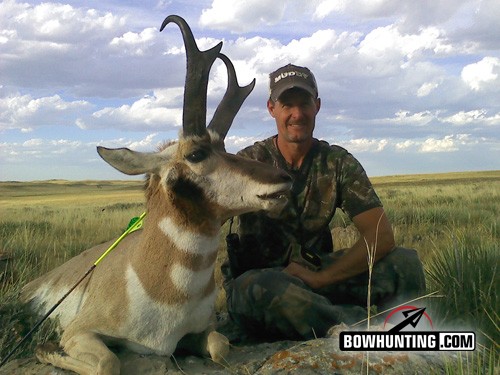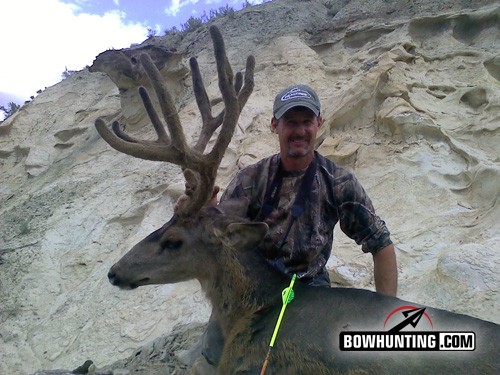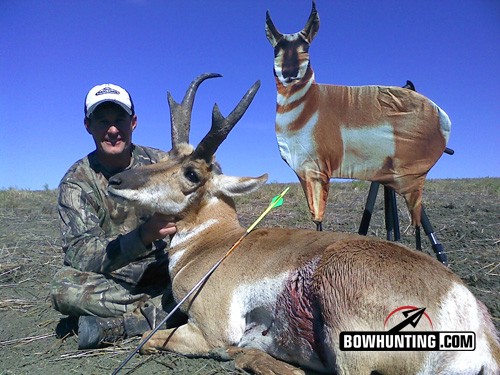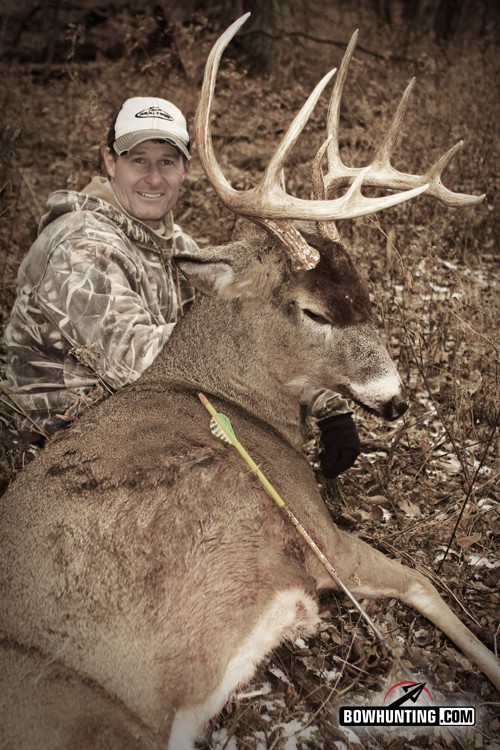LAST UPDATED: May 8th, 2015
It is not unusual for a person who hunts for a living to kill nine animals with a bow in one season. It is great deal harder for the guy who works two jobs and can only hunt on weekends or vacations. Being self employed does help, as in the case of Mike Lutt, a taxidermist in the fall and winter, and landscaper in spring in summer. During the 2010 hunting season Mike tagged nine animals, all of which qualify for the Pope and Young record book.
“During a normal year I usually shoot 3 to 4 animals,” said Mike. “But with the kids out of the house and an employee who stays behind to take care of the animals coming in to the taxidermy shop, I was able to spend more time hunting this past year.”
It started with antelope in the early season. Mike got permission to hunt on some private property in Wyoming. The landowner, Jay Butler has since decided to start an outfitting business and Mike helped him book 20 clients for his new Antelope Outfitters.
In late August he shot a mule deer, still in velvet, on public land in Colorado. It was the second day of the season and he was spot and stalking mule deer coming off private land onto public land. He watched the buck for a couple of days, and was able to sneak up on the bedded buck and make the shot.
Mike shot another antelope, this time using a decoy, while hunting in South Dakota. The buck was in a wide open area of a wheat stubble field. Mike laughs at how they all hid behind a single decoy. “We had a guy who was 6 foot 4 inches tall holding the decoy, a cameraman that was 6 foot 2 inches, and me, all behind this decoy.” But the ploy worked and it was all captured on film, as were most of the hunts for the season.
A 33 inch wide hard antlered mule deer was the next buck to wear Mike’s tag. He was hunting on private property owned by a friend in South Dakota, in September. On the first attempt as spot and stalking the buck in a sunflower field, he missed the buck at 20 yards. This did not discourage the hunter. He kept after the buck and finally shot him 4 days later in the same field.
While hunting another buck in Nebraska that same month, Mike spotted him in velvet . He was hunting on an Indian reservation. Although it was private property you still had to draw the tag for the area. Circumstances did not allow Mike to take a shot until a few days later when he found that same buck, now hard antlered, feeding on acorns. The Hoyt Alpha Max performed as expected and another P&Y was added to the list.
In November, Mike headed to Iowa with a buck decoy. He set up near a spot where a big 160 class buck traveled a fence. The spot where the buck normally jumped the fence was near a scrape and an alfalfa field. Everything worked as planned and the big buck presented a 4-yard shot. Needless to say, another buck went down.
In late November Mike was in his home state of Nebraska , cold calling for rutting bucks. He rattled in 2 bucks from 80 yards away. The bucks circled each other, but soon left. Mike quickly grunted and brought the buck back within range. The only problem was the buck came in head on to 5 yards. “He saw me and we stared at each other for 5 minutes. I know it was at least 5 minutes because my video camera shuts off automatically after 5 minutes of no activity. The buck turned toward the other buck that was also returning and offered me a good shot.” Mike took the shot.
Buck number 8 came from a walk-in property in northern Kansas. “It was 2 degrees,” Mike recalled. “I had the decoy out and saw a buck chasing a doe. I think the doe saw the decoy first. She came closer, then a 150 inch 4×4 crossed the creek and gave me a 5 yard shot.
Mike finished the season on his own property in Nebraska. The year before he had passed on a nice buck that he rattled in. In early December he had another chance at him. “I grunted at him and he stood still for 5 to 10 minutes before finally making his way to 20 yards.” Once again, Mike connected on his trophy.
Most of his hunts from last fall can be seen in the Great Plains Edition of Bill Winke’s television show. After the hunting season Mike goes to work in his taxidermy business, mounting about 100 deer between January and April. Then he switches gears and directs 25 employees in his landscaping business until late summer. When fall returns, Mike will be back in the field filming, hunting and working hard for another great season.









